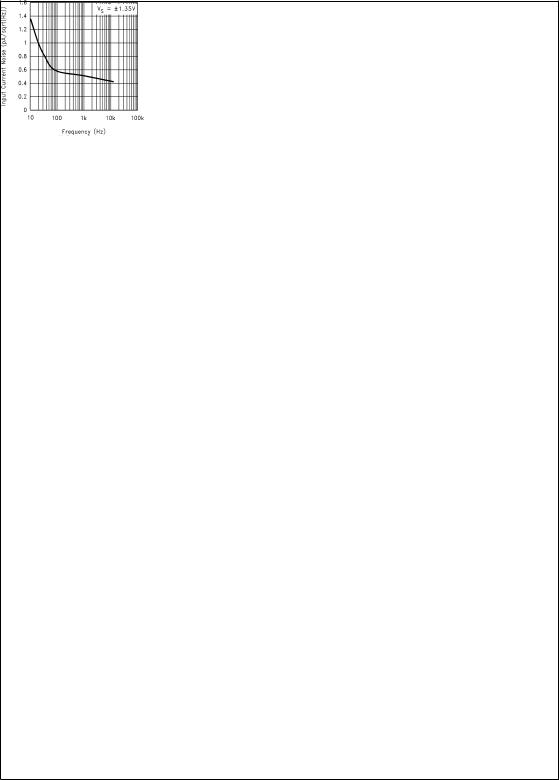NSC LPV358MX, LPV358MM, LPV358M, LPV324MX, LPV324MT Datasheet
...
August 1999
LPV321 Single/ LPV358 Dual/ LPV324 Quad
General Purpose, Low Voltage, Low Power, Rail-to-Rail Output Operational Amplifiers
General Description
The LPV321/358/324 are low power (9µA per channel at 5.0V) versions of the LMV321/358/324 op amps. This is another addition to the LMV321/358/324 family of commodity op amps.
The LPV321/358/324 are the most cost effective solutions for the applications where low voltage, low power operation, space saving and low price are needed. The LPV321/358/324 have rail-to-rail output swing capability and the input common-mode voltage range includes ground. They all exhibit excellent speed-power ratio, achieving 152 KHz of bandwidth with a supply current of only 9µA.
The LPV321 is available in space saving SC70-5, which is approximately half the size of SOT23-5. The small package saves space on pc boards, and enables the design of small portable electronic devices. It also allows the designer to place the device closer to the signal source to reduce noise pickup and increase signal integrity.
The chips are built with National's advanced submicron silicon-gate BiCMOS process. The LPV321/358/324 have bipolar input and output stages for improved noise performance and higher output current drive.
Features
(For V+ = 5V and V− = 0V, Typical Unless Otherwise Noted)
jGuaranteed 2.7V and 5V Performance
jNo Crossover Distortion
jSpace Saving Package |
SC70-5 |
|
2.0x2.1x1.0mm |
jIndustrial Temp.Range |
−40ÊC to +85ÊC |
jGain-Bandwidth Product |
152KHz |
jLow Supply Current |
|
LPV321 |
9µA |
LPV358 |
15µA |
LPV324 |
28µA |
jRail-to-Rail Output Swing |
|
@ 100kΩ Load |
V+−3.5mV |
|
V− +90mV |
jVCM |
−0.2V to V + −0.8V |
Applications
nActive Filters
nGeneral Purpose Low Voltage Applications
nGeneral Purpose Portable Devices
Connection Diagrams
14-Pin SO/TSSOP
5-Pin SC70-5/SOT23-5
DS100920-3
DS100920-1
Top View |
Top View |
|
|
8-Pin SO/MSOP |
|
DS100920-2
Top View
Power, Low Voltage, Low Purpose, General Quad LPV324 Dual/ LPV358 Single/ LPV321
Amplifiers Operational Output Rail-to-Rail
© 1999 National Semiconductor Corporation |
DS100920 |
www.national.com |

Ordering Information
|
Temperature Range |
|
|
|
|
|
|
|
|
Package |
Industrial |
Packaging Marking |
Transport Media |
NSC Drawing |
|
−40ÊC to +85ÊC |
|
|
|
|
|
|
|
|
5-Pin SC70-5 |
LPV321M7 |
A19 |
1k Units Tape and Reel |
MAA05 |
|
|
|
|
|
|
LPV321M7X |
A19 |
3k Units Tape and Reel |
|
|
|
|
|
|
5-Pin SOT23-5 |
LPV321M5 |
A27A |
1k Units Tape and Reel |
MA05B |
|
|
|
|
|
|
LPV321M5X |
A27A |
3k Units Tape and Reel |
|
|
|
|
|
|
8-Pin Small Outline |
LPV358M |
LPV358M |
Rails |
M08A |
|
|
|
|
|
|
LPV358MX |
LPV358M |
2.5k Units Tape and Reel |
|
|
|
|||
|
|
|
|
|
8-Pin MSOP |
LPV358MM |
P358 |
1k Units Tape and Reel |
MUA08A |
|
|
|
|
|
|
LPV358MMX |
P358 |
3.5k Units Tape and Reel |
|
|
|
|||
|
|
|
|
|
14-Pin Small Outline |
LPV324M |
LPV324M |
Rails |
M14A |
|
|
|
|
|
|
LPV324MX |
LPV324M |
2.5k Units Tape and Reel |
|
|
|
|||
|
|
|
|
|
14-Pin TSSOP |
LPV324MT |
LPV324MT |
Rails |
MTC14 |
|
|
|
|
|
|
LPV324MTX |
LPV324MT |
2.5k Units Tape and Reel |
|
|
|
|||
|
|
|
|
|
www.national.com |
2 |

Absolute Maximum Ratings (Note 1)
If Military/Aerospace specified devices are required, please contact the National Semiconductor Sales Office/ Distributors for availability and specifications.
ESD Tolerance (Note 2) |
|
Machine Model |
100V |
Human Body Model |
2000V |
Differential Input Voltage |
± Supply Voltage |
Supply Voltage (V+±V − ) |
5.5V |
Output Short Circuit to V + |
(Note 3) |
Output Short Circuit to V − |
(Note 4) |
Soldering Information |
|
Infrared or Convection (20 sec) |
235ÊC |
Storage Temp. Range |
−65ÊC to 150ÊC |
Junction Temp. (Tj, max) (Note 5) |
150ÊC |
Operating Ratings (Note 1)
Supply Voltage |
2.7V to 5V |
Temperature Range |
−40ÊC £T J£85ÊC |
Thermal Resistance (q JA)(Note 10) |
|
5-pin SC70-5 |
478ÊC/W |
5-pin SOT23-5 |
265ÊC/W |
8-Pin SOIC |
190ÊC/W |
8-Pin MSOP |
235ÊC/W |
14-Pin SOIC |
145ÊC/W |
14-Pin TSSOP |
155ÊC/W |
2.7V DC Electrical Characteristics
Unless otherwise specified, all limits guaranteed for T J = 25ÊC, V+ = 2.7V, V− = 0V, VCM = 1.0V, VO = V+/2 and R L > 1 MW.
Symbol |
Parameter |
Conditions |
Typ |
Limit |
Units |
(Note 6) |
(Note 7) |
||||
|
|
|
|
|
|
VOS |
Input Offset Voltage |
|
1.2 |
7 |
mV |
|
|
|
|
|
max |
TCVOS |
Input Offset Voltage Average |
|
2 |
|
µV/ÊC |
|
Drift |
|
|
|
|
|
|
|
|
|
|
IB |
Input Bias Current |
|
1.7 |
50 |
nA |
|
|
|
|
|
max |
|
|
|
|
|
|
IOS |
Input Offset Current |
|
0.6 |
40 |
nA |
|
|
|
|
|
max |
|
|
|
|
|
|
CMRR |
Common Mode Rejection Ratio |
0V £ VCM £ 1.7V |
70 |
50 |
dB |
|
|
|
|
|
min |
|
|
|
|
|
|
PSRR |
Power Supply Rejection Ratio |
2.7V £ V+ £ 5V |
65 |
50 |
dB |
|
|
VO = 1V, VCM = 1V |
|
|
min |
VCM |
Input Common-Mode Voltage |
For CMRR ³ 50dB |
−0.2 |
0 |
V |
|
Range |
|
|
|
min |
|
|
|
|
|
|
|
|
|
1.9 |
1.7 |
V |
|
|
|
|
|
max |
|
|
|
|
|
|
VO |
Output Swing |
RL = 100kW to 1.35V |
V+ -3 |
V+ -100 |
mV |
|
|
|
|
|
min |
|
|
|
|
|
|
|
|
|
80 |
180 |
mV |
|
|
|
|
|
max |
|
|
|
|
|
|
IS |
Supply Current |
LPV321 |
4 |
8 |
µA |
|
|
|
|
|
max |
|
|
|
|
|
|
|
|
LPV358 |
8 |
16 |
µA |
|
|
Both amplifiers |
|
|
max |
|
|
|
|
|
|
|
|
LPV324 |
16 |
24 |
µA |
|
|
All four amplifiers |
|
|
max |
|
|
|
|
|
|
3 |
www.national.com |

2.7V AC Electrical Characteristics
Unless otherwise specified, all limits guaranteed for T J = 25ÊC, V+ = 2.7V, V− = 0V, VCM = 1.0V, VO = V+/2 and R L > 1 MW.
Symbol |
Parameter |
Conditions |
Typ |
Limit |
Units |
|
(Note 6) |
(Note 7) |
|||||
|
|
|
|
|||
|
|
|
|
|
|
|
GBWP |
Gain-Bandwidth Product |
CL = 22 pF |
112 |
|
KHz |
|
Fm |
Phase Margin |
|
97 |
|
Deg |
|
Gm |
Gain Margin |
|
35 |
|
dB |
|
en |
Input-Referred Voltage Noise |
f = 1 kHz |
178 |
|
|
|
|
|
|
|
|
|
|
in |
Input-Referred Current Noise |
f = 1 kHz |
0.50 |
|
|
|
|
|
|
|
|
|
5V DC Electrical Characteristics
Unless otherwise specified, all limits guaranteed for T J = 25ÊC, V+ = 5V, V− = 0V, VCM = 2.0V, VO = V+/2 and R L > 1 MW. Boldface limits apply at the temperature extremes.
Symbol |
Parameter |
Conditions |
Typ |
Limit |
Units |
|
(Note 6) |
(Note 7) |
|||||
|
|
|
|
|||
|
|
|
|
|
|
|
VOS |
Input Offset Voltage |
|
1.5 |
7 |
mV |
|
|
|
|
|
10 |
max |
|
|
|
|
|
|
|
|
TCVOS |
Input Offset Voltage Average |
|
2 |
|
µV/ÊC |
|
|
Drift |
|
|
|
|
|
|
|
|
|
|
|
|
IB |
Input Bias Current |
|
2 |
50 |
nA |
|
|
|
|
|
60 |
max |
|
|
|
|
|
|
|
|
IOS |
Input Offset Current |
|
0.6 |
40 |
nA |
|
|
|
|
|
50 |
max |
|
|
|
|
|
|
|
|
CMRR |
Common Mode Rejection Ratio |
0V £ VCM £ 4V |
71 |
50 |
dB |
|
|
|
|
|
|
min |
|
|
|
|
|
|
|
|
PSRR |
Power Supply Rejection Ratio |
2.7V £ V+ £ 5V |
65 |
50 |
dB |
|
|
|
VO = 1V, VCM = 1V |
|
|
min |
|
VCM |
Input Common-Mode Voltage |
For CMRR ³ 50dB |
−0.2 |
0 |
V |
|
|
Range |
|
|
|
min |
|
|
|
|
|
|
|
|
|
|
|
4.2 |
4 |
V |
|
|
|
|
|
|
max |
|
|
|
|
|
|
|
|
AV |
Large Signal Voltage Gain |
RL = 100kW |
100 |
15 |
V/mV |
|
|
(Note 8) |
|
|
10 |
min |
|
|
|
|
|
|
|
|
VO |
Output Swing |
RL = 100kW to 2.5V |
V+ −3.5 |
V + −100 |
mV |
|
|
|
|
|
V+ −200 |
min |
|
|
|
|
90 |
180 |
mV |
|
|
|
|
|
220 |
max |
|
|
|
|
|
|
|
|
IO |
Output Short Circuit Current |
Sourcing, VO = 0V |
17 |
2 |
mA |
|
|
|
|
|
|
min |
|
|
|
|
|
|
|
|
|
|
Sinking, VO = 5V |
72 |
20 |
mA |
|
|
|
|
|
|
min |
|
|
|
|
|
|
|
|
IS |
Supply Current |
LPV321 |
9 |
12 |
µA |
|
|
|
|
|
15 |
max |
|
|
|
|
|
|
|
|
|
|
LPV358 |
15 |
20 |
µA |
|
|
|
Both amplifiers |
|
24 |
max |
|
|
|
|
|
|
|
|
|
|
LPV324 |
28 |
42 |
µA |
|
|
|
All four amplifiers |
|
46 |
max |
|
|
|
|
|
|
|
www.national.com |
4 |

5V AC Electrical Characteristics
Unless otherwise specified, all limits guaranteed for T J = 25ÊC, V+ = 5V, V− = 0V, VCM = 2.0V, VO = V+/2 and R L > 1 MΩ. Boldface limits apply at the temperature extremes.
Symbol |
Parameter |
Conditions |
Typ |
Limit |
Units |
|
(Note 6) |
(Note 7) |
|||||
|
|
|
|
|||
|
|
|
|
|
|
|
SR |
Slew Rate |
(Note 9) |
0.1 |
|
V/µs |
|
|
|
|
|
|
|
|
GBWP |
Gain-Bandwidth Product |
CL = 22 pF |
152 |
|
KHz |
|
Φm |
Phase Margin |
|
87 |
|
Deg |
|
Gm |
Gain Margin |
|
19 |
|
dB |
|
en |
Input-Referred Voltage Noise |
f = 1 kHz, |
146 |
|
|
|
|
|
|
|
|
|
|
in |
Input-Referred Current Noise |
f = 1 kHz |
0.30 |
|
|
|
|
|
|
|
|
|
Note 1: Absolute Maximum Ratings indicate limits beyond which damage to the device may occur. Operating Ratings indicate conditions for which the device is intended to be functional, but specific performance is not guaranteed. For guaranteed specifications and the test conditions, see the Electrical Characteristics.
Note 2: Human body model, 1.5 kΩ in series with 100 pF. Machine model, 0Ω in series with 200 pF.
Note 3: Shorting output to V+ will adversely affect reliability.
Note 4: Shorting output to V- will adversely affect reliability.
Note 5: The maximum power dissipation is a function of TJ(max), θJA, and TA. The maximum allowable power dissipation at any ambient temperature is P D = (TJ(max)±TA)/θJA. All numbers apply for packages soldered directly into a PC board.
Note 6: Typical values represent the most likely parametric norm.
Note 7: All limits are guaranteed by testing or statistical analysis.
Note 8: RL is connected to V -. The output voltage is 0.5V ≤ VO ≤ 4.5V.
Note 9: Connected as voltage follower with 3V step input. Number specified is the slower of the positive and negative slew rates.
Note 10: All numbers are typical, and apply for packages soldered directly onto a PC board in still air.
5 |
www.national.com |

Typical Performance Characteristics Unless otherwise specified, VS = +5V, single supply, TA = 25ÊC.
Supply Current vs Supply |
Input Current vs |
Sourcing Current vs |
Voltage (LPV321) |
Temperature |
Output Voltage |
DS100920-B4 |
DS100920-B5 |
|
DS100920-41 |
Sourcing Current vs |
Sinking Current vs |
Sinking Current vs |
Output Voltage |
Output Voltage |
Output Voltage |
DS100920-42 |
DS100920-43 |
DS100920-44 |
|
|
Output Voltage Swing vs |
Input Voltage Noise vs |
Input Current Noise vs |
|
Supply Voltage |
|||
Frequency |
Frequency |
||
|
DS100920-B6 |
DS100920-56 |
DS100920-70 |
|
|
www.national.com |
6 |

Typical Performance Characteristics Unless otherwise specified, VS = +5V, single supply, TA = 25ÊC. (Continued)
Input Current Noise vs Frequency |
Crosstalk Rejection vs Frequency |
PSRR vs Frequency |
DS100920-68 DS100920-73 DS100920-72
CMRR vs |
CMRR vs Input |
CMRR vs Input |
Frequency |
Common Mode Voltage |
Common Mode Voltage |
DS100920-63 |
|
DS100920-64 |
DS100920-65 |
VOS vs CMR |
VOS vs CMR |
|
Input Voltage vs Output Voltage |
DS100920-45 |
DS100920-46 |
DS100920-69 |
7 |
www.national.com |
